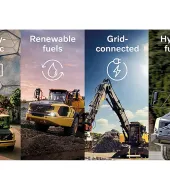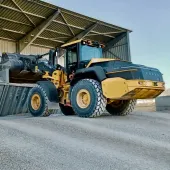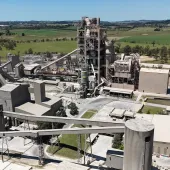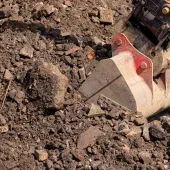Helping to Build a Better Future
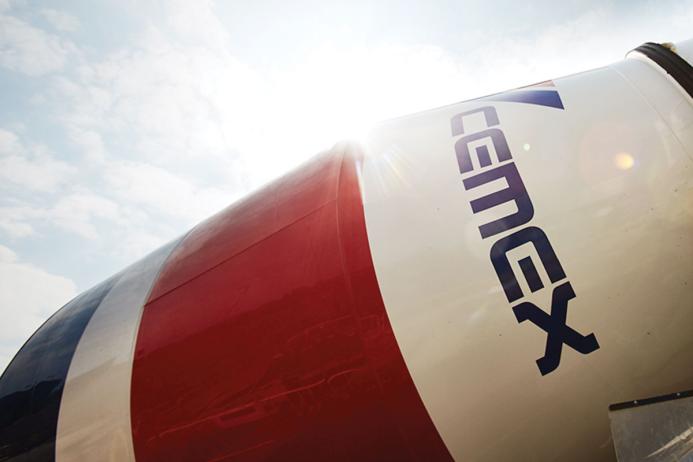
First published in the December 2022 issue of Quarry Management
Richard Kershaw, technical manager at CEMEX UK, discusses why pushing the boundaries in concrete technology is critical in meeting decarbonization targets
Today’s forward thinkers in concrete technology are important shapers of society, the economy, and the environment. As one of the most widely used man-made products on the planet, concrete is all around us, providing the current fabric of our built environment and the basis for our future renewable energy infrastructure.
When it comes to balancing technological advancement and innovation with environmental needs and concerns, it is a finely tuned operation and one that CEMEX do not take lightly. Climate action is by far the biggest challenge of our time and, as such, demands new ways for industry to work together to develop new technologies and embed ambitious solutions to meet the growing need and urgency.
The concrete and cement industry has been committed for many years to continuous improvement and innovation. We see new and emerging technologies gathering momentum across the value chain in areas of CO2 capture, storage and use, thermal and electric energy efficiency, as well as digitization, BIM, machine learning and AI, to name just a few, and it is hugely encouraging to see new industries developing at pace in these areas.
Future in Action
For CEMEX, advancement in concrete technology means putting carbon reduction and collective action at the heart of all key decision-making processes. The company does this through its global ‘Future in Action’ decarbonization and sustainability programme, which is working hard to achieve sustainable excellence through climate action circularity and natural resource management, with the primary objective of becoming a net-zero CO2 company. Net Zero in concrete will be here before we know it, and no one can ignore the huge task ahead. It is a highly complex task, but change can be accelerated if we think and act like it’s 2050 every day.
Climafuel at Rugby cement plant
In May this year, CEMEX announced the inauguration of a new Climafuel facility at their Rugby cement plant. This significant investment aims to allow the plant to eliminate the use of fossil fuels, operating instead on 100% alternative fuels. Rugby is the first CEMEX plant to achieve this important milestone.
By the end of 2022, CEMEX are expected to achieve a 40% reduction in carbon emissions in Europe, well on the way to their target of a 55% reduction by 2030, a target aligned to the European Union’s decarbonization goal. With the investment at Rugby’s plant, CEMEX in Europe expect to process the equivalent annual residues of a city the size of Madrid or Berlin and are expected to achieve 70% alternative fuel substitution in the region this year.
Carbon capture
Earlier this year it was announced that the company’s corporate venture capital and open innovation unit, CEMEX Ventures, is increasing its investment in Carbon Clean. This investment is part of CEMEX’s strategy to develop breakthrough decarbonization technology. Carbon Clean focus on tackling industrial decarbonization, providing advanced carbon capture technologies and solutions. Having captured more than 1.5 million tonnes of CO2 to date, Carbon Clean will scale their breakthrough modular technology to achieve industrial carbon capture on a gigatonne scale. Additionally. CEMEX and Carbon Clean are developing a pilot of this technology at CEMEX’s Victorville cement plant in California, with funding partially granted by the US Department of Energy.
Concrete technology
CEMEX’s most significant breakthrough in concrete technology in recent times has to be the introduction of a carbon-neutral ready-mixed concrete product that is in accordance with The CarbonNeutral Protocol. The company is the first UK manufacturer to introduce a range of low-carbon concrete products and is fully committed to expanding the use of renewable energy and increasing clinker substitution through alternative cementitious materials.
CEMEX’s Vertua carbon-neutral range has been specifically designed to offset any residual CO2 to achieve net-zero CO2 and now provides clear evidence that we can all transition to a carbon-neutral economy where concrete is an essential component in the development of climate-friendly urban projects, sustainable buildings, and resilient infrastructure. Since its UK launch in 2020, the company has seen interest in and demand for Vertua cement and concrete steadily grow, accounting for 34% and 31% of total sales, respectively in the first quarter of 2022, almost double the prior year. This adoption rate speaks to strong customer demand for low-carbon products. CEMEX have now set an ambitious goal for Vertua low-carbon cement and concrete products to represent more than half of all cement and concrete sales by 2025.
CarbonNeutral concrete blocks
ReadyBlock Zero Light and ReadyBrick Zero are zero-carbon concrete products which look identical to traditional concrete blocks and common bricks, the only difference being that they embody up to 80% less carbon, with the remaining carbon offset to make a carbon-neutral product, in accordance with The CarbonNeutral Protocol. To do this, CEMEX are working with Natural Capital Partners, award-winning experts on carbon neutrality and climate finance, who are harnessing the power of business to create a more sustainable world. CEMEX remain the only UK supplier to offer the house-building sector a fully net-zero concrete block option, with availability ahead of the Government’s Future Homes Standard – whereby all new homes must produce 75–80% fewer carbon emissions by 2025.
Fibre-reinforced concrete
According to latest figures compiled by The Department for Business, Energy and Industrial Strategy, the cost of concrete-reinforcing bars has risen by 43.6% year on year, whilst the price of fabricated structural steel has risen by 35.9%. This comes on top of rising labour and fuel costs across the supply chain, forcing many to be more discerning when making specification, procurement, and purchasing decisions.
As steel prices continued to soar throughout 2022, CEMEX are encouraging contractors, civil engineers, and specialist groundworkers to consider the cost and performance benefits of switching to advanced fibre-reinforced concrete. As an alternative to steel-mesh construction on large-scale projects such as roads, bridges, airports and taxiways, including internal floors, the macro-synthetic and steel fibres in CEMEX’s advanced fibre-reinforced concrete provide high levels of performance, without compromising on quality. A fibre-reinforced solution has the potential to reduce CO2 compared with the use of steel mesh and minimizes waste as the concrete is supplied with the precise amount of fibres required for the project.
Being at the forefront of the circular economy in the construction value chain, CEMEX are pioneering ways to increase the use of waste and residues as alternative raw materials and fuels in their operations through the use of new technologies, whilst continuing to offer cement, ready-mixed concrete, aggregates, and urbanization solutions in growing markets around the world. For more information, visit: www.cemex.com
- Subscribe to Quarry Management, the monthly journal for the mineral products industry, to read articles before they appear on Agg-Net.com


